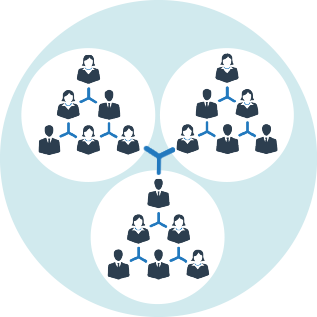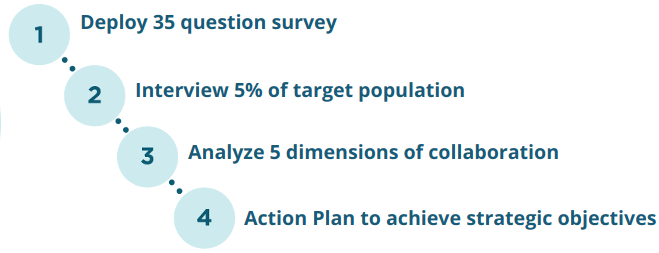Organizational diagnostic
Why Do a Diagnostic?
- Receive an objective snapshot of the current state of collaboration on strategic initiatives, such as growth plans, innovation initiatives, reorganization implementations, mergers & acquisitions, and new strategy roll outs.
- By using both qualitative and quantitative data, attain a comprehensive picture of what is working well and preventing your key teams from reaching your strategic goals.
- Identify gaps between your leadership vision of how teams should be collaborating and how they actually are.
- Prioritize key areas that leadership needs to focus on to achieve goals with teams of distinction!


Sample diagnostic output
This is a strong foundation upon which to build.
How often do people give and/or receive feedback? (Interview)

Is improving, yet the company still struggles with a lack of communication and trust.
- Over half (52%) of the employees interviewed stated that leaders need to communicate more often.
- In both the survey and interviews, many team members report significant issues with internal communication at all levels.
- A common response is information is too controlled, and details are not shared properly or often. (41%)

"Although feedback is seen as beneficial, most employees feel that it is not given or received enough to provide a benefit."
"We are not an organization that gives much feedback, especially from the top down. Especially when it comes to constructive positive feedback. It’s easier to communicate when things are ugly, but when things are good, there’s no feedback."

"If the company would like us, and the teams, and everybody, to really focus and work on a plan to achieve these objectives in 2022, I would strongly recommend to share more information or have a more open discussion about it."
"Partly goals are clear, but not everywhere. That may have to do with our secrecy of how each group’s doing, and numbers, and KPI’s. There isn’t much visibility and transparency as to how the group is doing."
Our Scientifically Validated Model
To validate the model, data was collected from a total of 577 professionals. The reliability coefficient ranged from .84 to .98, indicating a very strong and reliable model. Validation reports available upon request.










